Early October 2015
 Sunday, October 4, 2015 at 9:35PM
Sunday, October 4, 2015 at 9:35PM I can feel the new season in the moist air and in the cool breeze. I inhale autumn smells as I putter in the garden: the moldy smell of damp soil, upturned to make way for new plants, and the aroma of freshly laid pine straw and wood chips. It is good to be in the garden now that the hot summer is over. Every day brings cooler temperatures and more leaves fluttering to the ground. We will soon be buried under mountains of them, and Lou has already started the raking, a chore that will not end completely till late winter.
Meanwhile, here are some images taken in early October: Sepia image of dried Snowflake Hydrangea blooms, which have turned brown in early October.
Sepia image of dried Snowflake Hydrangea blooms, which have turned brown in early October.
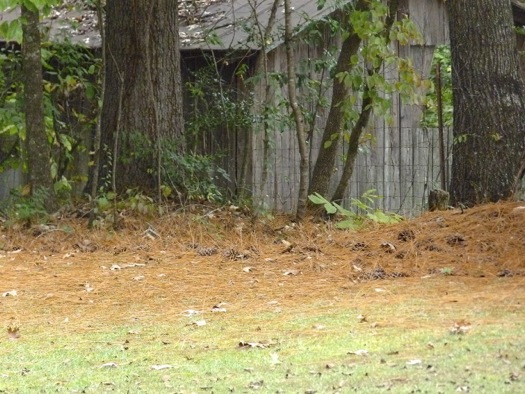 A neighbor's old shed borders our property.
A neighbor's old shed borders our property.
 Viola 'Pink Halo', Dinosaur Kale 'Lacinato', Lorapetalum 'Purple Pansy', Flowering Kale 'Peacock Red', Asian Jasmine and pink Dianthus grow together in a fall arrangement. An old gourd nestles amidst the plants.
Viola 'Pink Halo', Dinosaur Kale 'Lacinato', Lorapetalum 'Purple Pansy', Flowering Kale 'Peacock Red', Asian Jasmine and pink Dianthus grow together in a fall arrangement. An old gourd nestles amidst the plants.
Part of the profits from the sale of Salvia 'Wendy's Hope', shown in the two images below, go to fight breast cancer.
 I have seen bees, butterflies and hummingbirds all partaking of the nectar of Salvia 'Wendy's Hope.'
I have seen bees, butterflies and hummingbirds all partaking of the nectar of Salvia 'Wendy's Hope.'
 Clockwise from top left: Pentas; Persicaria 'Red Dragon'; Purple Aster; Toad Lily (Trycrytis) 'White Towers'; Variegated Toad Lily; Salvia 'Amistad.'
Clockwise from top left: Pentas; Persicaria 'Red Dragon'; Purple Aster; Toad Lily (Trycrytis) 'White Towers'; Variegated Toad Lily; Salvia 'Amistad.'
 'Coral' Drift Roses have bloomed all summer and continue to pump out the blooms.
'Coral' Drift Roses have bloomed all summer and continue to pump out the blooms.
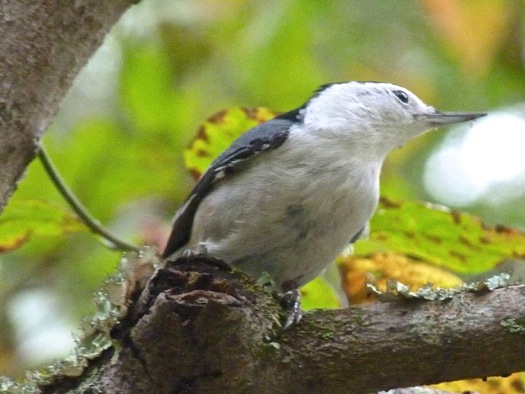 This White-breasted Nuthatch posed for me as I took its photo.
This White-breasted Nuthatch posed for me as I took its photo.
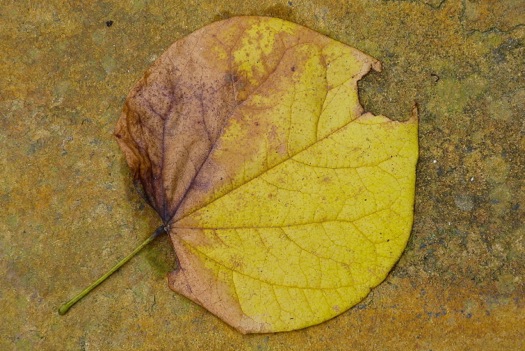 A fallen redbud leaf
A fallen redbud leaf
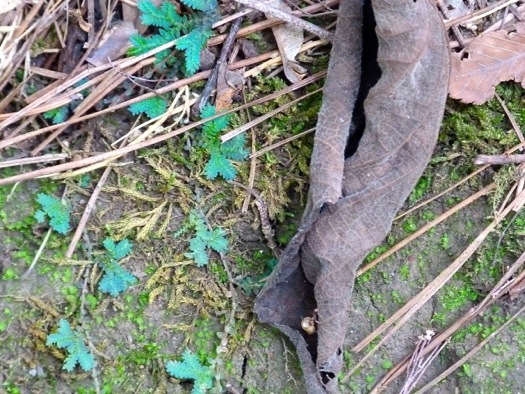 This Peacock Moss has found its way onto the moss path. It may be too pretty to walk on; but if it is happy, I will leave it alone.
This Peacock Moss has found its way onto the moss path. It may be too pretty to walk on; but if it is happy, I will leave it alone.
 A view into the woods with some early fall color changes
A view into the woods with some early fall color changes
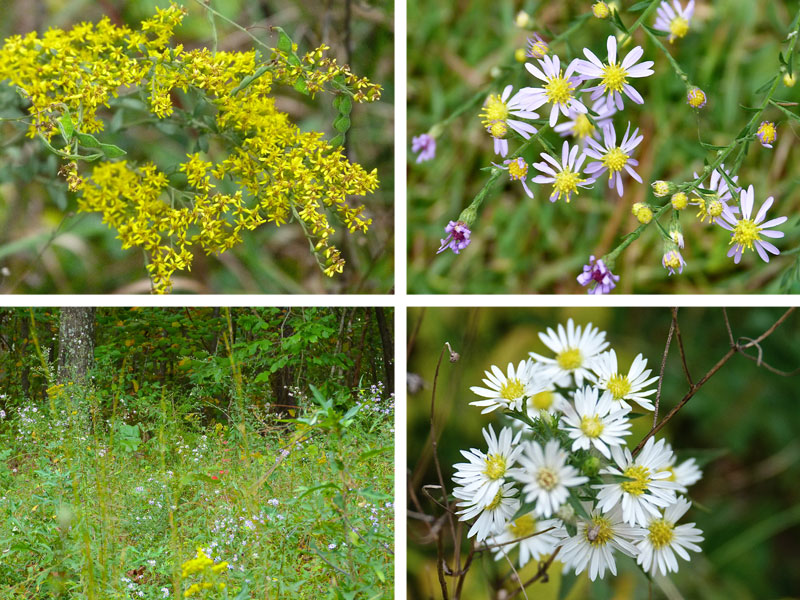 Solidago (Goldenrod) and purple and white asters grow on a wild hillside.
Solidago (Goldenrod) and purple and white asters grow on a wild hillside.
 A volunteer tomato plant is still producing these tasty cherry tomatoes.
A volunteer tomato plant is still producing these tasty cherry tomatoes.
Last, but certainly not least, my little Fuyu Persimmon tree, in a large pot, is loaded with fruit this year. They are not ready to eat yet, but I could not pass up a picture:
Have a great week! Deb




